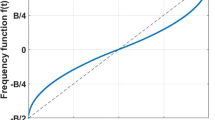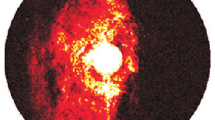We propose and study a method of defense against intelligent simulating signal-like active interference on the basis of an assessment of the coherent properties of radar signals. The signalcoherence measure, which is defined as the entropy of the signal-energy distribution over the eigensubspaces of the signal correlation matrix, is proposed as a selection criterion. The main factors, which influence the coherence degree of radar signals, are analyzed. The computation cost during the implementation of the proposed method for estimating the quantitative measure of the signal coherence is estimated. The results of the full-scale experimental studies, which employ various types of aircraft (with a propeller engine and turbojets) and the special equipment, i.e., a repeater of simulating signal-like interference, are presented. The estimated degree of coherence of the signals from real airborne objects and the simulating signal-like interference, which has been obtained during the experimental studies, confirms the possibility of selecting the simulating signal-like interference by the proposed method.
Similar content being viewed by others
References
A. I. Kanashchenkov, Protection of Radar Systems from Interference. State-of-the-Art and Development Trends [in Russian], Radiotekhnika, Moscow (2003).
A. V. Mikhailov, Aerospace Defense, 7, 20–25 (2010).
M. V. Maksimov, Protection from Radio Interference [in Russian], Sovetskoe Radio, Moscow (1976).
S.R. Geister, Adaptive Detection and Identification with Interference Selection Using Spectral Portraits [in Russian], Military Academy of the Republic of Belarus, Minsk (2000).
Yu.T.Karmanov, Vestn. Yuzh.-Ural. Gos. Univ., No. 26, 41–46 (2009).
S. N. Kireev and V.A.Talanov, Radiotekhnika, No. 1, 60–64 (2008).
A. F. Kryachko and M.A.Kuksenko, Vopr. Radioélektron., No. 2, 107–116 (2009).
A.F.Kryachko, N.A.Gladky, and V.K. Losev, Usp. Sovr. Radioélektron., No. 10, 201–204 (2015).
V. A. Bukhalev, V.A.Boldinov, and S.P.Pryadkin, Vestn. Mosk. Aviat. Inst., 20, No. 5, 149–157 (2013).
A.V. Chernousov, A.V.Kuzovnikov, and V.G. Somov, Vest. Akad. M. F.Reshetnev Sibir. Gos. Aérokosm. Univ. , No. 4, 81–84 (2013).
M. G.Koryagin and S. N. Nikiforov, Telekommun. Ustr. Sist., 7, No. 2, 149–151 (2017).
A.F.Kryachko, M.A.Glaznev, V.K. Losev, and Ya.Ya.Levin, Vopr. Radioélektron., No. 6, 71–75 (2016).
Yu.M. Perunov, Radioelectronic Suppression of Information Channels of the Weapon-Control Systems [in Russian], Radiotekhnika, Moscow (2008).
S.R. Geister and I. S. Sadovsky, Dokl. Belorus. Gos. Univ. Informat. Radioeléktron. No. 1, 48–53 (2005).
E. S. Fitasov, Datchiki Sist., No. 3, 24–28 (2017).
Ya.D. Shirman, Yu. I. Losev, N.N. Minervin, et al., Radioelectronic Systems: Fundamentals of Development and Theory [in Russian], Handbook, MAKVIS, Moscow (1998).
Ya.D. Shirman and V.N.Manzhos, Theory and Technique of Processing Radar Information against a Background of Interference [in Russian], Radio i Svyaz’, Moscow (1981).
M. M.Chernykh, Radiotekhnika, No. 2, 36–42 (1999).
A. G. Aganin, V.V. Zamarev and O.V.Vasil’ev, Radiotekhnika, No. 6, 50–57 (2003).
P. V. Mikheev, Radiophys. Quantum Electron., 49, No. 1, 74–78 (2006). https://doi.org/10.1007/s11141-006-0039-8
I.Ya.Orlov, E. S. Fitasov, D.N. Ivlev, and S.A.Kozlov, Antenny, No. 3, 31–36 (2017).
E. S. Fitasov, I.Ya.Orlov, E.V. Legovtsova, and V.V.Nasonov, Radiophys. Quantum Electron., 64, No. 1, 64–76 (2021). 10.52452/00213462_2021_64_01_69.
V. I. Bunimovich, Fluctuation Processes in Radio Receiving Units, Sovetskoe Radio, Moscow (1951).
G. A. Egorochkin, A.B.Blyakhman, A.D.Bomshtein, et al., History of Domestic Radar [in Russian], Izd. Dom Stolichnaya Éntsiklopediya, Moscow (2015).
E.S.Fitasov, I.Ya.Orlov, S.A.Kozlov, et al., Radiophys. Quantum Electron., 62, No. 6, 412–419 (2019). 10.1007/s11141-019-09987-6
E. S. Fitasov and S. A.Kozlov, “An appliance for selecting false targets” [in Russian], Russian Federation RF Patent No. 184465 (2018).
S. L. Marple, Jr., Digital Spectral Analysis and Applications, Prentice-Hall, Englewood Cliffs, N.J. (1987).
E. S. Fitasov, E. V. Legovtsova, D.A.Pal’guev, et al., Radiophys. Quantum Electron., 64, No. 4, 300–308 (2021). https://doi.org/10.1007/s11141-021-10132-5
Author information
Authors and Affiliations
Corresponding author
Additional information
Translated from Izvestiya Vysshikh Uchebnykh Zavedenii, Radiofizika, Vol. 64, No. 11, pp. 917–925, November 2021. Russian DOI: https://doi.org/10.52452/00213462_2021_64_11_917
Rights and permissions
Springer Nature or its licensor holds exclusive rights to this article under a publishing agreement with the author(s) or other rightsholder(s); author self-archiving of the accepted manuscript version of this article is solely governed by the terms of such publishing agreement and applicable law.
About this article
Cite this article
Fitasov, E.S., Legovtsova, E.V., Kudryashova, O.E. et al. Selection of Simulating Signal-Like Interference in Radar Systems with Internal Coherence. Radiophys Quantum El 64, 825–832 (2022). https://doi.org/10.1007/s11141-022-10181-4
Received:
Accepted:
Published:
Issue Date:
DOI: https://doi.org/10.1007/s11141-022-10181-4




